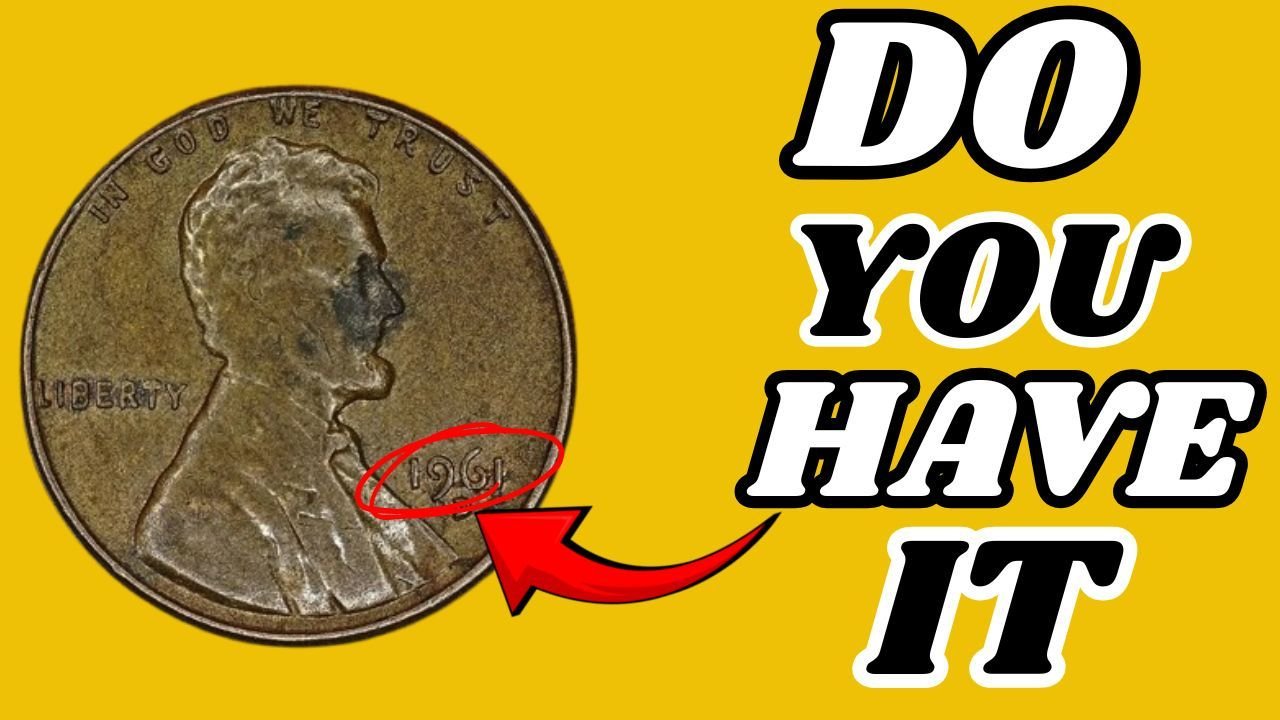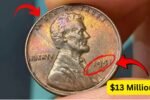The Lincoln Wheat Penny: The Lincoln Wheat Penny, first introduced in 1909, remains one of the most iconic coins in American history. Originally minted to honor the 100th anniversary of Abraham Lincoln’s birth, this humble one-cent piece has since become a collector’s dream. Even today, certain rare versions of the Lincoln Wheat Penny are believed to be worth thousands—some even reaching a jaw-dropping value of $144,000. This begs the question: could a fortune still be hiding in your pocket change?
What Makes a Penny So Valuable?
Not all Wheat Pennies are worth more than face value, but a few specific coins have become extremely valuable due to their rarity, minting errors, and historical significance. Coins made during certain years—particularly during wartime—have become scarce and desirable. For example, some pennies were mistakenly struck with steel instead of copper, or include rare errors like double dies or off-center strikes. These anomalies, combined with excellent condition and low mintage numbers, can dramatically raise a coin’s value.
The Legendary 1943 Copper Penny
Among the most famous examples is the 1943 Copper Wheat Penny. During that year, the U.S. Mint switched from copper to steel to conserve materials for World War II. However, a few copper planchets accidentally made their way into the presses, resulting in a limited number of copper 1943 pennies. These coins are so rare that they can command prices well into six figures. One such penny reportedly sold for around $144,000 at auction, sparking national attention and renewed interest in coin hunting.
Still in Circulation – Myth or Reality?
Many people wonder if these high-value pennies could still be in everyday circulation. Technically, it’s possible, though extremely unlikely. Over the decades, most rare Wheat Pennies have been pulled out by collectors or enthusiasts. Still, because millions were originally produced, and because many people don’t pay close attention to small change, there’s always a slim chance that a valuable coin could slip through unnoticed. That’s why coin experts and hobbyists alike still check their pennies carefully—just in case.
Spotting a Valuable Lincoln Wheat Penny
To the untrained eye, all Lincoln Wheat Pennies might look similar. But true collectors know what to look for. Rare pennies often have distinctive features, like the year, mint mark (such as “D” for Denver or “S” for San Francisco), and specific design elements. The reverse side with the two wheat stalks is another clue—it was replaced by the Lincoln Memorial design in 1959, so any wheat design indicates a coin from before that year. But spotting an error or rare variety often requires a magnifying glass and a trained eye.
Preserving a Rare Find
If you think you’ve stumbled upon a rare Lincoln Wheat Penny, resist the urge to clean it. Cleaning coins can significantly reduce their value. Instead, store the penny safely and have it evaluated by a reputable coin dealer or grading service. Even if your coin isn’t worth six figures, it may still be worth far more than one cent. Knowing what you have is the first step toward unlocking its potential value.
Table: Some Rare Lincoln Wheat Pennies and Their Estimated Value
| Year | Mint Mark | Notable Feature | Estimated Value |
|---|---|---|---|
| 1909 | S VDB | First year with designer’s initials | $800 to $2,500 |
| 1914 | D | Low mintage | $200 to $3,000 |
| 1922 | No D | Missing mint mark error | $500 to $5,000 |
| 1943 | Copper | Wrong metal used during WWII | Up to $144,000 |
| 1955 | None | Doubled die obverse | $1,000 to $5,000 |
The Thrill of Coin Collecting
The idea that a penny in your wallet could be worth a fortune adds a layer of excitement to everyday life. For many, coin collecting is more than a hobby—it’s a treasure hunt, a link to history, and a way to appreciate the craftsmanship of America’s currency. Lincoln Wheat Pennies serve as a reminder that even the smallest denomination can hold immense value.
Final Thoughts
So, is the Lincoln Wheat Penny valued at $144,000 still out there in circulation? The chances are small, but not impossible. Stories of people discovering rare coins in pocket change continue to surface, keeping the dream alive. Whether you’re a seasoned numismatist or just curious about the coins in your drawer, it might be worth taking a closer look. You never know what piece of history—and value—you might find.
FAQs
What is a Lincoln Wheat Penny?
It’s a U.S. one-cent coin minted between 1909 and 1958 with wheat stalks on the reverse side.
Why is the 1943 Copper Penny so valuable?
Because it was mistakenly made with copper during a year when steel was supposed to be used, making it extremely rare.
How can I tell if my penny is worth anything?
Check the year, mint mark, and look for unusual features. A coin expert can give you an accurate assessment.
Is it legal to sell rare coins?
Yes, it is completely legal to buy and sell coins, including rare ones.
Can I find a valuable penny in everyday change?
It’s unlikely but not impossible. Millions of Wheat Pennies were made, and some might still be out there.




